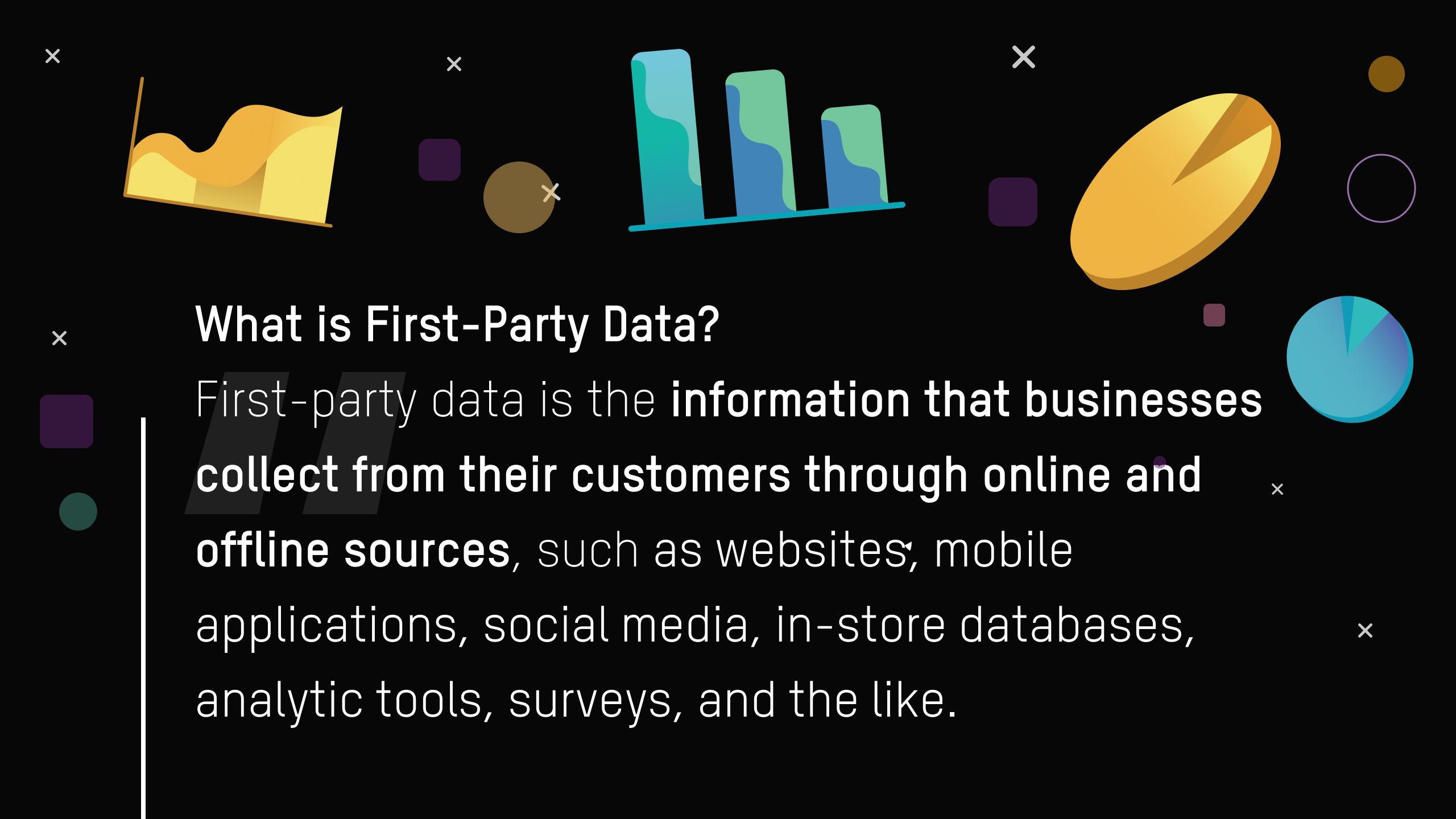With the impending death of third-party cookies, advertisers are running toward the most valuable resource at hand—first-party data.
By the end of 2023, Google will be dropping its third-party cookies, which is set to deter advertisers from collecting crucial information from consumers. Because of this major shift, businesses have been taking a step back from third-party data and moving towards first-party data instead.
In fact, according to eMarketer, third-party data usage dropped since the start of 2021 while first-party data usage dramatically increased. More than 88% of marketers are now putting first-party data usage on the top of their lists (Marketing Dive).
Indeed, as we transition to a cookieless world, the need to invest in first-party data has grown stronger and stronger. So the question is—just how important is first-party data in today’s advertising landscape?

First-party data is perhaps the most dependable resource you can get your hands on. Since businesses collect information straight from the source (aka their customers), it promises a higher level of precision compared to third-party data, which is obtained from multiple—often questionable–sources.
In fact, at least 30% of marketers said that inaccurate, low-quality third-party data is their number one problem when utilizing data (Digiday). So more and more businesses are pursuing first-party data since it’s more reliable and precise than other data sources. The accuracy level of first-party data helps advertisers make more calculated decisions when setting targeting parameters and formulating messaging for their campaigns.
No doubt, first-party data is the best data asset for targeting and personalization. But aside from being precise and accurate, the type of insights that businesses gain from first-party data is specific and very relevant to them. It provides the right type of data that they need to build highly targeted campaigns.
For instance, advertisers get to segment their audiences based on specific and useful customer insights—such as their browsing habits, purchase histories, and content preferences—all of which are needed when developing supercharged, personalized campaigns. Plus, there’s no need for them to tap into other third-party providers because the data they need is already in their hands.
Aside from enhancing advertisers’ targeting efforts, first-party data is also safer to use. Of course, there are lesser privacy concerns and threats when collecting and utilizing your own data since you know where, when, and how they were acquired.
Businesses also have full control over their collection processes when compiling first-party data, unlike when buying from third-party providers. They can acquire data from their customers while ensuring they’re compliant with basic privacy laws and regulations. This reduces exposure to data privacy and security problems, which can hold them legally liable.
Furthermore, aside from being privacy-safe, proving consent is easier in first-party data collection. Businesses can simply show evidence of when and how they obtained consent from their customers, whether that’s through their websites, apps, customer forms, or other means. This is more challenging in third-party data as the process isn’t as straightforward. There are stricter rules in data collection and data sharing that businesses must abide by.
Another reason why first-party data collection is valuable is because of its impact on bidding. First-party data plays a crucial role in the bidding strategies of campaigns. Advertisers can use this type of data to inform their decisions and make more profitable bids for their keywords and ad placements. They can avoid wasting their budget on unprofitable bids by using the data they have at hand.
Indeed, first-party data can help businesses make more calculated and lucrative decisions for their campaigns. And the best thing of all? All these wonderful benefits are free.



